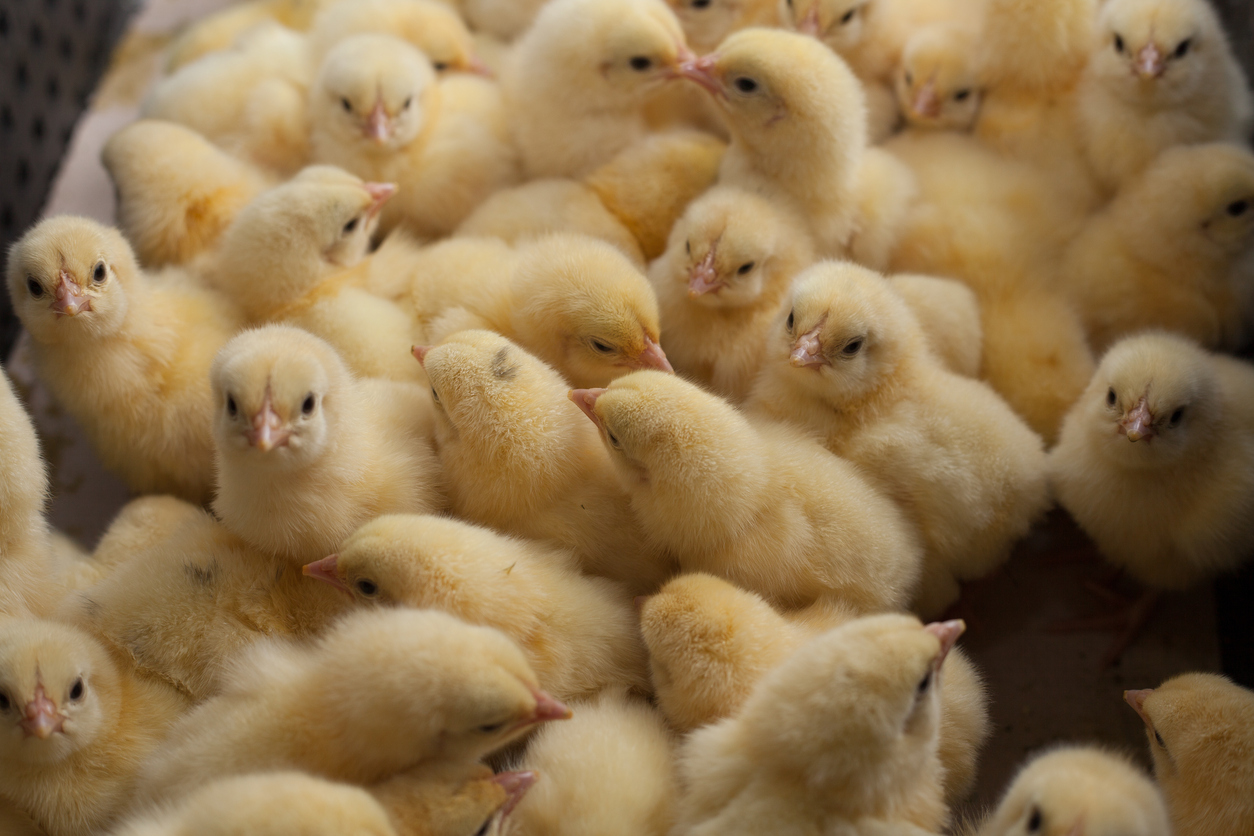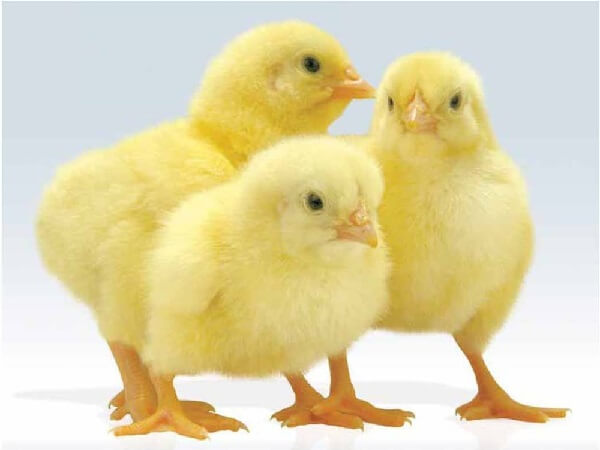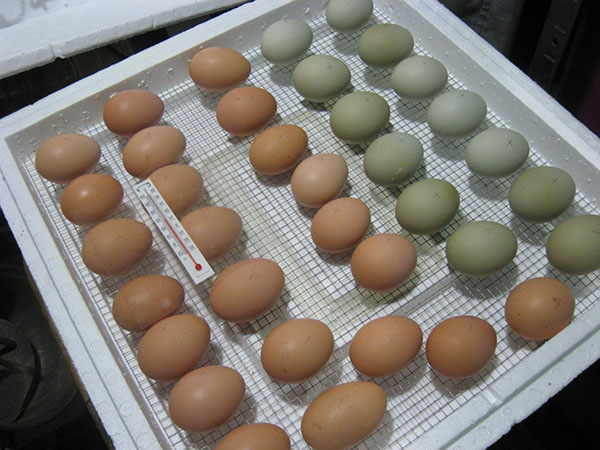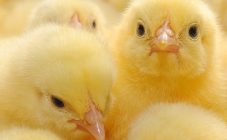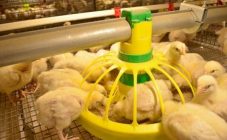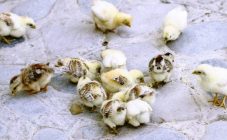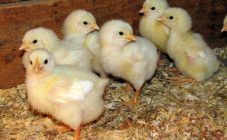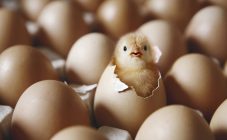Content:
The word "broiler" evokes the memory of a delicious, appetizing chicken prepared by a skilled chef according to an individual recipe. The meat is mainly sourced from both the market and the store. But it is best to grow this breed of chickens yourself. Not everyone knows how to distinguish broiler chicks from ordinary ones. This article will tell you everything about chickens.
What do chickens look like?
Broiler chickens are hatched artificially by crossing certain breeds of chickens. One should not think that at home the chicks will have the same qualities as their "parents". To get a meat breed of babies, it is best to buy.
Broilers first appeared in the twentieth century and have become popular both for mass production in poultry farms and for growing at home. This breed of chickens grows up in a very short time, they are kept for no more than two months. Their further maintenance is unprofitable, since they will no longer grow, but they need to be fed.
Because chicks are growing rapidly, they will need to be fed at least every two hours. The night break should be six hours. In addition, these chickens can live in cramped conditions, but are demanding on cleanliness and warmth.
Broiler chicks are visually distinct from other breeds of chicks. Since broiler chickens are a beef breed, their body structure is corresponding. Even small chickens look different:
- Their body has a rectangular shape and a wide chest;
- The thighs are firm and muscular;
- The legs are much shorter than those of other chicks, but at the same time they are thick, capable of supporting body weight;
- The wings, like the legs, are also short.
Adult chickens have white plumage, while babies are yellow. If the seller offers chicks that have a drawing, or completely red, then you should definitely pass by, since this is a baby of a different breed of chickens. In addition, broiler chicks have small combs and do not have earrings. This factor is due to the fact that this breed of chickens does not breed.
A regular chicken chicken weighs between thirty and thirty-five grams, while a baby broiler weighs a full forty grams. After two weeks, it grows from one hundred and eighty to two hundred grams. In a month, the chicken will weigh about a kilogram.
How the chicken appears
Many would like to know how chickens appear, because even in a dream they cannot dream of the whole process that takes place inside a chicken egg. The development of a chick in an egg begins with a blastodisc, as it is customary to call a small clot of cytoplasm. This is where new life begins to emerge. This clot is located on the surface of the egg yolk. Since the yolk is less dense in this place, the blastodisc is always in the upper position at any turn of the egg.
Thanks to this, at the time of incubation, the embryo warms up better. The whole process of chick evolution begins long before the laying hen lays an egg.On the yolk, the cytoplasm can be seen as a small light spot, the diameter of which is no more than two millimeters. The light halo around the spot is called blastoderma.
As soon as favorable conditions arise for the egg (a brood hen warms it up, or an incubator is used), cell division begins. Already on the second day, two shells appear in the egg:
- Amnion;
- Allantois.
These shells are temporary organs through which the chick grows and develops until it is fully formed.
Chicken amnion
The chick needs this shell so that the embryo does not dry out and is protected from outside influences. Amnion provides the required amount of fluid during the formation of the chick in the egg.
Allantois in a chicken
Thanks to this shell, a large number of other functions are performed, namely:
- The chick embryo receives the right amount of oxygen;
- Waste products are promptly removed from the embryo;
- The chick's body receives all the necessary trace elements;
- Provides calcium to the fetus.
Allantois is a vasculature that surrounds the entire inner surface of the egg and connects to the embryo at the navel.
The "breathing" of the embryo depends on the stage of development of the embryo. In the first stages of development, oxygen enters the cells of the blastodisk independently. After the blood vessels appear, oxygen comes along with the blood from the yolk. But since the embryo grows and develops, the oxygen coming from the yolk is not enough for it.
Therefore, after a week, oxygen begins to flow through the allantois, which, as the embryo grows, spreads throughout the shell.
Embryo nutrition
At first, the embryo feeds on the protein and yolk of the egg. The embryo is located from the sharp end to the blunt end, while the protein is concentrated at the sharp end. But, thanks to the pressure of the allantois, it is displaced and with the help of the amnion it enters the mouth of the embryo. After two weeks, all the nutrients are delivered to the chick, thanks to the allantois from the shell.
Egg position
For the normal development of the embryo, it is necessary that the egg be able to turn one hundred and eighty degrees. This is only possible when the eggs are horizontal in the incubator. If incubation occurs in an upright position, then the development of the embryo slows down, its weight during hatching is much less than during a horizontal position.
Why turn the egg
The eggs are turned throughout the entire incubation period. The exceptions are the first day and the last two. On the first day, it is important to warm up the blastodisk well; on the last day, the chick has already assumed a position in which it is preparing to hatch.
By twisting, the blastoderm will not be able to stick in the shell. In addition, the following actions are performed:
- The amnion is reduced;
- The egg heats up evenly from all sides;
- The embryo takes the correct position;
- Gas exchange improves;
- Allantois is closed;
- Nutrition improves.
Chicken in egg
It takes only twenty-one days for a small fluffy chicken to emerge from an ordinary egg. Many are interested in how this process occurs in stages throughout the entire period. It goes like this:
- In an ordinary egg, on the first day of incubation, a yolk clot is formed, from where life actually originates.
- On the second day, barely noticeable blood vessels begin to appear.
- On the third day, the first contours of the eyes and legs begin to appear.
- The next day, this process becomes more noticeable.
- After a week, the eyes are fully formed.
- Then a beak appears.
- After nine days, capsules appear, thanks to which the chicken will fledge.
- After twelve days, the beak is fully formed.
After that, the embryo begins to develop every hour. After two weeks, the eyelid begins to close the pupil, and the head and trunk begin to become covered with fluff. On the fifteenth day, the eyelid completely closes the eye.After eighteen days, the protein is completely consumed by the embryo. On the nineteenth day, the chick begins to draw in the yolk, its neck begins to stretch towards the air chamber. The baby breathes the last drops of oxygen in the egg. On the twentieth day, the yolk is already drawn in, the chicken is alive, he opened his eyes and began to peck at the shell. On the twenty-first day, the baby, helpless and completely wet, leaves his "house" and goes outside. Thus, you can see how many stages pass before the chick appears in the egg.
During the development of an embryo in an egg, many ask the question: "How to determine the age of chickens?" To do this, you need an instrument called an ovoscope.
Transfer of young animals to the common room
Most novice poultry farmers do not know at what age chicks can be added to adult chickens. Combining chicks that are too young with an adult flock is not highly recommended, as the adults will peck at the young. Sometimes it happened that adult chickens killed young ones to death. Although there are exceptions when young people with adults take root and exist side by side peacefully.
Naturally, no one can guess how the birds will behave. For this reason, it is better not to give in to young ladies in advance and wait for the due date. In addition, old chickens can restrict young animals in food and drink, as they will drive them away from feeders and drinkers.
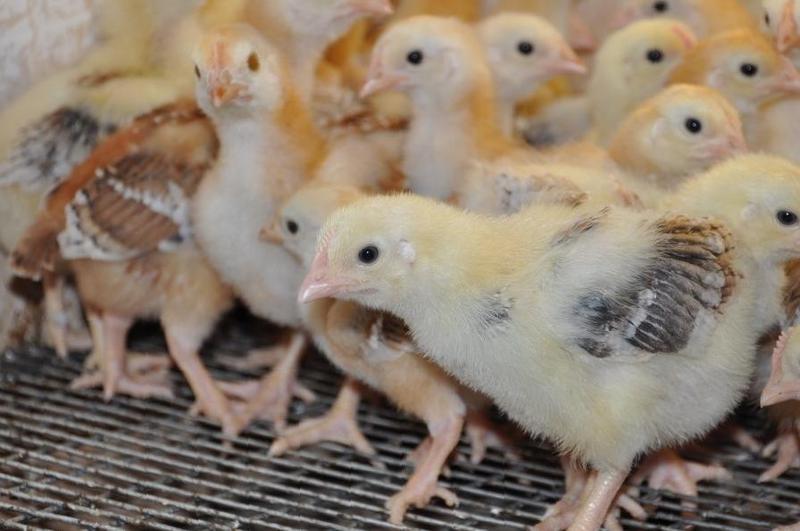
The only reason why it is undesirable to do a union is the possibility of infection of young individuals from old ones with various diseases.
Many poultry farmers practice a way in which birds can get used to each other visually. To do this, they create a walking area, which they block with a net and release old layers and young hens on both sides. When the chickens see each other every day, they no longer show aggression towards the chickens that need to be transplanted into the common room.
The only reason why it is undesirable to do a union is the possibility of infection of young individuals from old ones with various diseases. After all, their immunity is still very weak and not adapted to fight diseases. Therefore, some poultry farmers still prefer to keep animals of different weight categories in separate rooms.
There are several folk secrets, thanks to which young animals will be housed without problems:
- The young ones need to be hooked up at night, so that fights in the chicken coop can be avoided.
- You can wipe off the chickens with a mitten. First the elders, then the young. This way, both of them will smell the same. Therefore, there will be no disagreement between individuals.
- Before combining the two age categories of chickens, you need, first of all, to add a rooster to the young ones for several days. Later, he will not allow his young friends to offend.
Secrets of experienced poultry farmers
It is easier to buy chickens than to incubate eggs. But when buying, you need to know how to do it correctly. This is best done in poultry farms. But in this case, you need to be careful when buying:
- It is best to buy chicks in winter. First of all, this time of the year the prices are much lower. But such purchases can be made with a warm house.
- When making a purchase, you need to carefully examine the chicks. Their down should be clean and fluffy. These signs are the key to the health of the chicks.
- The eyes and beak of the chicks should also be healthy, shiny and free of discharge.
- The tummy should be soft, but not hang.
- The umbilical cord is clean, without signs of discharge, so is the cloaca.
- You need to buy those chickens that are actively moving and pecking food from time to time.
- If you take chicks by weight, then they should weigh at least thirty-five grams.
The room in which the chicks grow should be dry and warm. In no case should drafts be allowed in the house. After the purchase, it is necessary that the air temperature in the room where the chickens grow is at least thirty degrees. Over the course of a month, the temperature is gradually reduced to twenty degrees.
Feeders and drinkers for babies should be equipped in such a way that chicks have easy access to them. In no case should feed fall under your feet.
Raising chicks is not at all difficult, but in order for the livestock to grow strong and healthy, you need to follow all the rules and recommendations of experienced specialists. After all, caring for a chicken, like a duckling, must be proper. Only then will the novice farmer be provided with meat and eggs.
